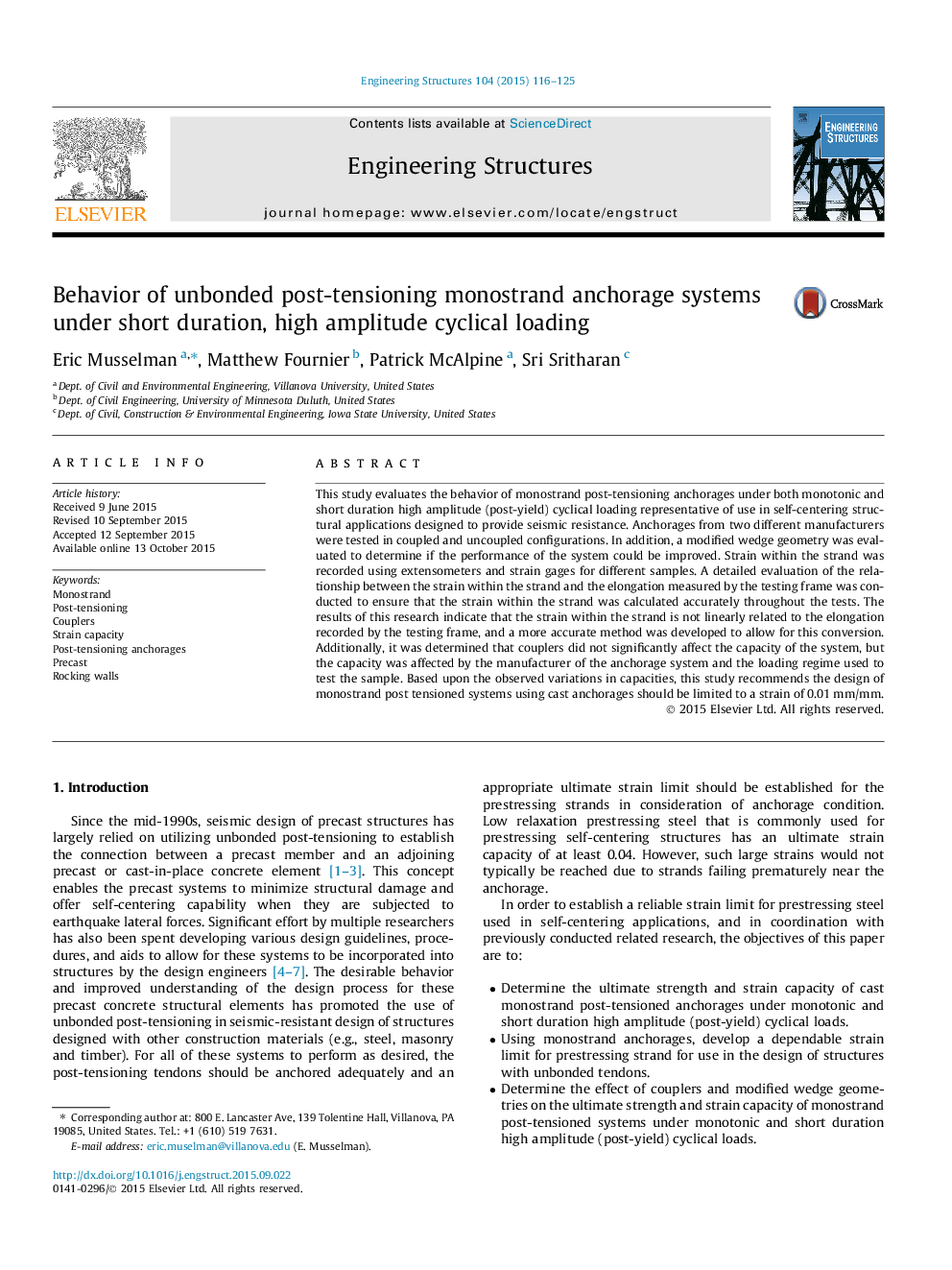| Article ID | Journal | Published Year | Pages | File Type |
|---|---|---|---|---|
| 266088 | Engineering Structures | 2015 | 10 Pages |
•Post-tensioned anchorages were tested to determine the ultimate stress and strain.•Relationship was developed between testing frame displacement and strand strain.•Post-yield cyclical loading reduces the capacity of some post-tensioned systems.•Design strain of 0.01 is recommended for post-tensioned systems with cast anchorages.
This study evaluates the behavior of monostrand post-tensioning anchorages under both monotonic and short duration high amplitude (post-yield) cyclical loading representative of use in self-centering structural applications designed to provide seismic resistance. Anchorages from two different manufacturers were tested in coupled and uncoupled configurations. In addition, a modified wedge geometry was evaluated to determine if the performance of the system could be improved. Strain within the strand was recorded using extensometers and strain gages for different samples. A detailed evaluation of the relationship between the strain within the strand and the elongation measured by the testing frame was conducted to ensure that the strain within the strand was calculated accurately throughout the tests. The results of this research indicate that the strain within the strand is not linearly related to the elongation recorded by the testing frame, and a more accurate method was developed to allow for this conversion. Additionally, it was determined that couplers did not significantly affect the capacity of the system, but the capacity was affected by the manufacturer of the anchorage system and the loading regime used to test the sample. Based upon the observed variations in capacities, this study recommends the design of monostrand post tensioned systems using cast anchorages should be limited to a strain of 0.01 mm/mm.
